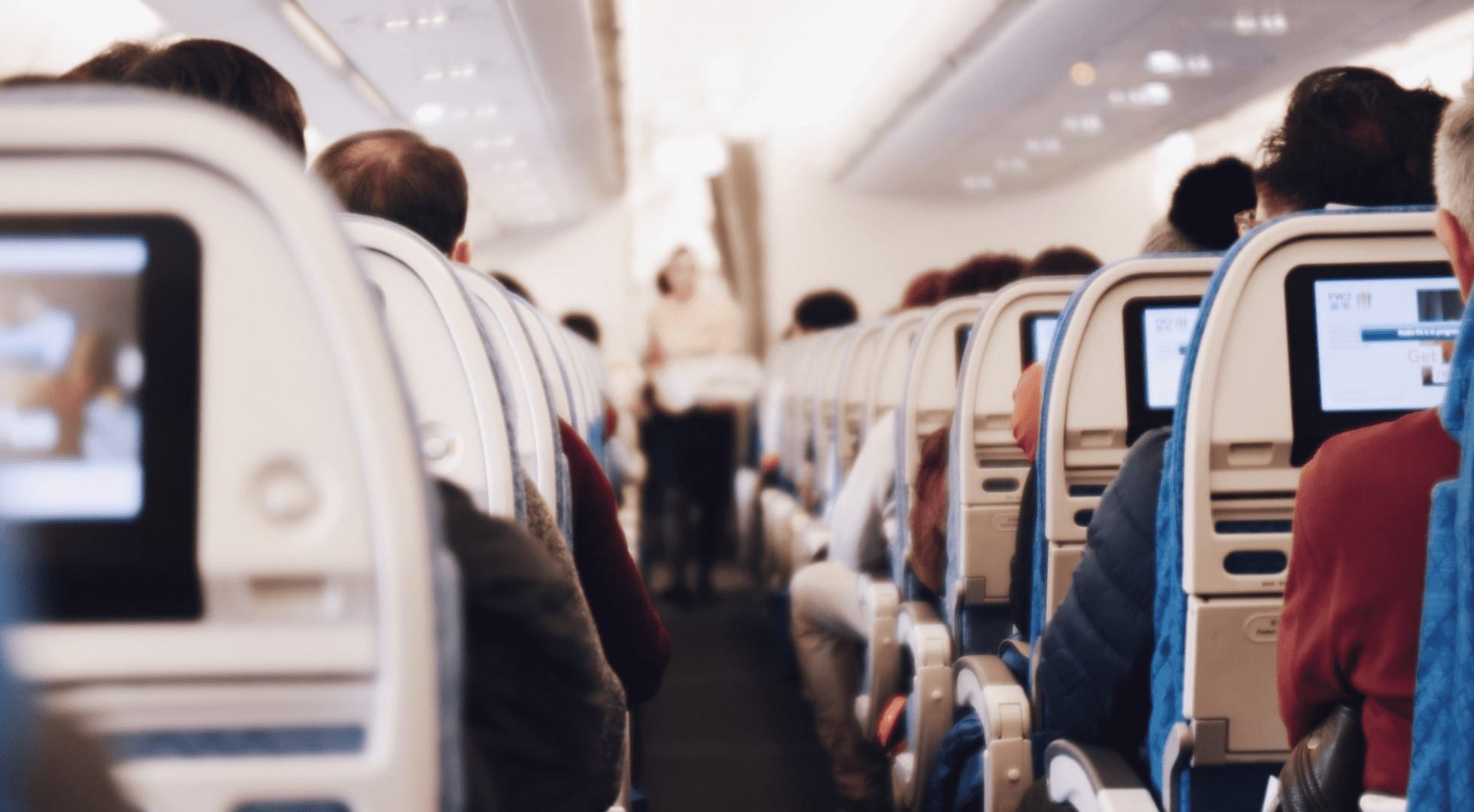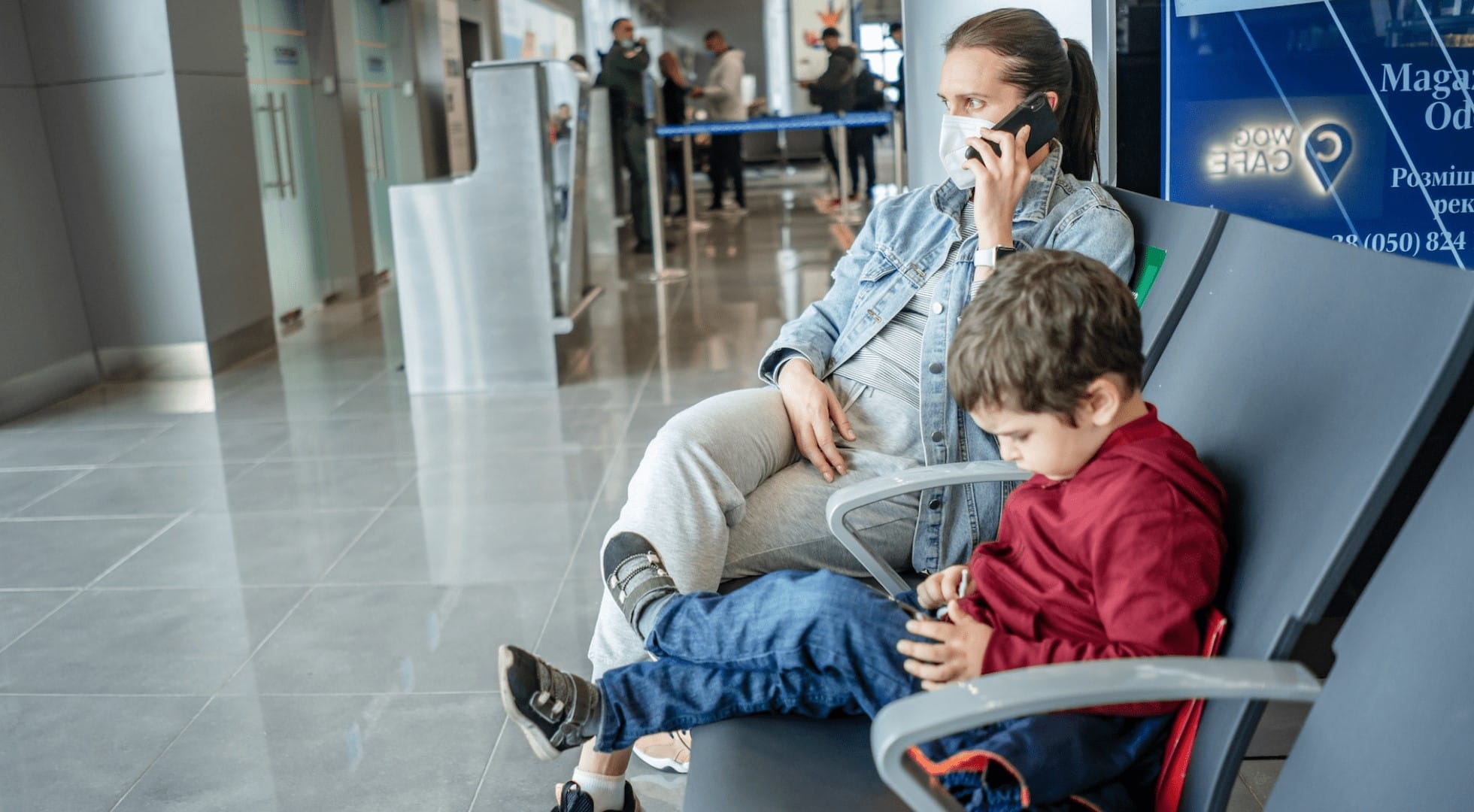Planning a family trip overseas can be daunting, from finalising the travel itinerary to booking flight tickets and accommodation. Add long flights across different time zones that lead to jet lag in infants and children, increasing frustration and anxiety of travelling to a foreign country for infants and children and parents. Accordingly, handling jet lag is tough on both parents and children. Some of the best advice on how to manage jet lag in kids from wanderlust parents is the golden rule, i.e., failure to plan ahead means planning to fail when it comes to beating jet lag.
Read on for crucial tips on managing jet lag when travelling with your little ones for a relaxing family holiday.
What Is Jet Lag?

According to the Centers for Disease Control and Prevention, jet lag is due to a disruption in a person’s regular or daily routine and different time zones. The body’s internal clock is susceptible to time changes leading to temporary fatigue and mood swings. The severity of jet lag symptoms depends on the age of the traveller and the number of time zones covered. The greater the number of time zones crossed, you may experience significant jet lag symptoms.
Some travellers also feel more jet lagged flying in Eastern than West time zones. This means that if you are travelling from Asia to the United States, the outward journey may be more likely to be easier than the trip back to Asia from the United States. Infants and children may take longer to get over jet lag than adults, usually within 2-3 days.
Common Symptoms of Jet Lag in Infants and Children
Common symptoms of jet lag in infants and children include irritability, insomnia, fatigue, disorientation, poor appetite, to slightly severe symptoms like vomiting and dizziness. Although jet lag symptoms may differ from one child to another, the effects are only temporary. At any rate, if symptoms of jet lag in your infant or children persist for more than a week, consult a doctor for specialised medical attention.
handy tips for Flying with kids
How To Manage Jet Lag: Before your trip
1. Talk to your kids about the family trip
If you are flying with slightly older children (aged 6 and above), chatting with them about your family trip will help them gauge what to expect. You can even show them travel videos of places on your itinerary to get them excited about the trip.
2. Plan shorter trips and choose a late afternoon or night flight
Planning shorter trips with your little ones to destinations near your home country before moving on to multiple international destinations and being patient with them will help them adapt much faster to the environment on board a plane and the routine of flying.
Deciding on suitable flights depending on your arrival time at your holiday destination is also crucial for your infant and children’s internal clock to adjust naturally. Arriving at your holiday destination in the late afternoon allows your children to experience sunlight, have an early dinner and sleep early to wake up refreshed for a jam-packed day of activities.
Alternatively, night flights are more suitable for flying across multiple holiday destinations. This way, your infant or children can enjoy a light meal before boarding the flight and have a good rest and sleep on the flight.
3. Book airlines/flights with children-friendly perks



Travelling on airlines/flights with kid-friendly perks, like Disney channel and movies, puzzles, and toys, keeps them occupied and happy throughout the plane journey. Parents may also consider airport lounge areas with a kid-friendly zone for them to play and burn off some steam before boarding the plane, which helps them sleep better during the flight.
4. Schedule your child’s sleep time to suit the time zone of your flight route or travel destination
Help your children ease into a suitable sleep pattern during the flight or your holiday destination time zone by planning their bedtime an hour later if you are flying West or an hour earlier if you are travelling East every night before your trip. A month or a week before your trip, set your watch to the destination time zone and practise the new schedule for your kids eating and sleeping routine.
Leading by example is equally important when travelling as a family, so following through with the new schedule will keep them motivated and excited about the trip with fewer mood swings to manage during the flight and upon arrival at your holiday destination.
5. Pack comfort toys and sufficient necessities
Be sure to include comfort items like soft toys, a favourite blanket or a book in your hand luggage to ensure your infant and children remain relaxed and comfortable throughout the flight. Keeping them engaged with familiar items from home is a distraction and a source of reassurance in a new environment, especially on long-haul flights with many passengers.
When it comes to packing sufficient necessities like diapers, wet wipes, milk, etc, try not to overpack as you will find it difficult to manage too much baggage and your children before departure and upon touchdown at your holiday destination.
6. Consult a paediatrician on the consumption of melatonin for infants and children
Melatonin is a hormone produced in the human body that enables us to sleep. Available as a supplement, it is common for adult travellers to take melatonin to aid deep sleep. However, the usage and effects of melatonin in infants and children require consultation with a paediatrician. Ultimately, ensuring your infant or children adjust naturally to sleep in a new environment is always the best way, especially if you often travel with kids.
How To Manage Jet Lag: Onboard the flight
7. Dress your infants and children in loose and comfortable clothes
Loose-fitting dresses or t-shirts and shorts/leggings are stylish and comfy air travel outfits for kids. It is best to dress your toddlers in layers or clothing without buttons or too many zippers so it is easier to remove when they need to go to the bathroom. Get them to wear shoes that are strap-ons instead of shoes with laces which makes it easier to go through airport screening, too.
8. Start your new schedule on the plane
Reset your mind and internal clock and those of your toddlers and children by getting right into the destination time zone. As much as possible, seat toddlers away from aisle seats as they tend to grab things easily, especially when the food and beverage cart passes by. Eat a light meal, watch any in-flight children-themed movies, and get your snooze time according to the designated time zone. There’s no better way to get over jet lag as a family other than to reset and hit the ground running based on your destination time zone as soon as you take off!
9. Stay hydrated
Since the air-conditioning in the plane can lead to dry throats and discomfort, ensure you and your children, especially toddlers, consume fluids as much as possible. Try to get your infant and children to drink more water and fluids during the day and less towards the night or bedtime. This way, you don’t need to rush them to the bathroom too often at night during the flight.
10. Eat light or healthy meals



It is best to eat light meals like fruits with a high-water content and vegetables rich in nutrients to boost energy levels in children. Avoiding candy, chocolates, and fizzy drinks means alleviating a sugar rush that can cause your toddler or children to get hyper and throw tantrums.
Parents travelling with an infant should pack breast milk or powdered milk in the hand baggage and feed their infant in small quantities at reasonable intervals to avoid hunger pangs. Otherwise, you can select pureed baby food from the in-flight meals for babies and toddlers. Consuming fewer citrus-based juices or dairy products during the flight may also lower the possibility of stomach discomfort that may lead to vomiting in children.
11. Be patient and help your infant and children adapt
Keep your kids engaged with toys or catch a Disney movie together during a morning or daytime flight. When night falls, bring out the sleep cues like eye masks, ear plugs, and their favourite blanket to signal that it is time for them to get ready for sleep.
When dealing with toddlers, beware of germs, and always have wet wipes with you to wipe away dirty surfaces. Ensure your children have their shoes on at all times, and enlist your spouse to go with your children go to the bathroom. Whatever the case, remain calm and help them adapt as much as possible. Get your spouse to take turns watching the kids. This keeps your stress levels and exhaustion in check on the plane.
How To Manage Jet Lag: At your Holiday Destination
12. Adjust your itinerary to work around jet lag
Once you arrive at your holiday destination, you can do leisurely activities over two days to get over jet lag, like strolling around the city and visiting museums or parks. Since jet lag in infants and children lasts about 2-3 days, it may be best to take things easy to allow everyone in the family sufficient time to adapt to the new time zone.
If you arrive at your holiday destination in the afternoon, take a quick nap with your infant and children. Next, head out for more adventurous activities like water sports or cycling to get as much exposure to the sun to keep your entire family energised for the rest of the day.
13. Walk (or bask) in the sun



Being out in the sun is an excellent cure for jet lag in infants and kids. Walking as much as possible also is a good form of exercise for you and your children to stay healthy. If you are on an island vacation, that’s even better as you get a healthy dose of sun, sea and sand by just playing with your kids along the shore or lying at the beach in the sun. Your children will be ready to sleep once you return to your hotel, as they will be tired after a long day of walking or playing in the sun.
14. Eat and sleep at the right time
Get the children ready for meal time as you practised before your trip. Prepare to go to bed as early as possible to be well-rested for the next day, especially if you have a full day of travelling to multiple places. Keep your meals light and healthy, get your children to eat even if they feel too tired, and drink lots of water to avoid dehydration. Turning off the TV and mobile gadgets, dimming the room lights, and staying in bed show children it is time to sleep. If your child is restless, get them to sleep in the same bed as you to make them feel comfortable and ease them into sleep.
15. Don’t sweat the small stuff
Kids tend to follow the lead of their parents. So, if your infant or kids are not getting enough sleep on the plane, don’t worry too much or get frustrated. Your children will eventually fall asleep once you arrive at your holiday destination. It is essential to remain calm and patient in managing jet lag in infants and children. Otherwise, your child may end up throwing more temper tantrums.
Everyone in your family will feel jet-lagged at some point during your family trip. Since there is no perfect solution to beat jet lag, adapting to the needs of your infant and children is vital to beat jet lag in your kiddos. Practise these handy tips and adjust as you go along to reduce the stress and sleepless nights of your precious little ones. Set the bar low when managing jet lag in infants and children, and remember that if you choose to be happy, most likely, your kiddos will do too!
Get inspired for an amazing family vacation with your Young Ones in tow!
REACH OUT TO US AT +603 2303 9100 OR
[email protected]
You may also be interested in:
